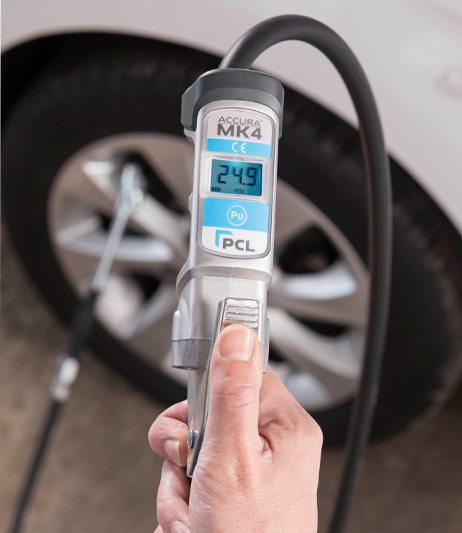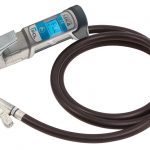Having the correct tyre pressure is important for numerous reasons. From tyre lifespan, to safety and fuel economy, having too much or too little air in your tyres can have wide-ranging implications. PCL discusses the potential consequences of incorrectly inflating tyres.
In May, the MOT test in England, Scotland and Wales changed, and several new items to be tested were added, including checking if tyres are obviously underinflated. As well as this now being required by law, it might also be an opportunity to build trust with your customers by advising them of the issues with having under – or over – inflated tyres.
With fuel prices on the increase, you can advise customers that through having correctly-inflated tyres they can save money, in terms of fuel economy. Some 3% more fuel is used if the tyre inflation level is 6psi below what it should be.
TyreSafe, the UK charity dedicated to raising awareness of the importance of correct tyre maintenance and the dangers of defective and illegal tyres, estimates that under-inflated tyres cost UK consumers £600m per year. By regularly checking tyre pressures and making sure they are at 100% of the manufacturer-recommended psi, the lifespan of the tyres is maximised, which also saves money.
Under-inflated and defective tyres are the primary cause of most road traffic accidents. When tyres are not correctly inflated, braking performance is affected, which can lead to dangerous situations. Alarmingly however, over a third of tyres are being driven on roads at least 8psi below vehicle manufacturer recommendations.
Although it may seem obvious, it is important to remember that the air in a vehicle’s tyres carries the majority of the vehicle’s load, and tyres are the only contact point between the car and the road.

This ‘contact patch’ of an inflated tyre is only the size of the palm of your hand, so to have the best possible stability, this area needs to be flat to the road, which is achieved by having the correct tyre pressure.
Here are four tyre inflation scenarios:
■ When tyres are inflated to 100%, pressure is distributed evenly, meaning the tyre will achieve the maximum possible mileage and lifespan, and the vehicle will display optimum road handling and fuel consumption.
■ If tyres are only inflated to 60%, there will be extreme flexing in the rubber, leading to excessive heat build-up and presenting a major safety risk. In this scenario, tyre mileage is very low, at around 35%.
■ When people think of tyres not being inflated correctly, they tend to think of under-inflation, however, over-inflated tyres also present problems. For example, if tyres are over-inflated to 120%, there will be greater wear in the tread centre, leading to reduced mileage – around 10% lower than if the tyres were inflated at 100%.
■ The fourth and most common scenario is where a vehicle’s tyres are not quite fully inflated. When inflated to 80%, there is greater stress in the tyre shoulder, leading to a smaller contact area, which means reduced mileage of around three quarters of the optimum rate, and greater fuel consumption.
As well as it now being a requirement of the MOT to check if tyres are obviously under- inflated, mechanics can also build trust by advising customers of the benefits of regularly checking pressure, including greater safety, extended tyre lifespan, and savings on fuel consumption.
PCL’s ACCURA MK4 Digital Tyre Inflator is an indoor and outdoor electronic tyre inflator, combining the robustness of a mechanical gauge with the simplicity of digital. With a backlit screen, it can be used in poorly-lit areas. Suitable for cars and trucks, it has inflation capabilities of up to 250psi.










